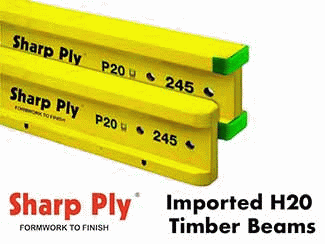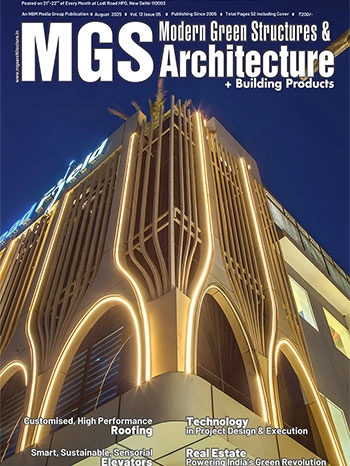Cement Demand to Slow in Q2FY26 After Strong Start; GST Cut to Ease Const Costs: India Ratings

India Ratings and Research (Ind-Ra) has released its quarterly credit digest on the cement sector, highlighting demand-supply dynamics, realisations, costs, profitability, and credit trends. The report also reviews region-wise housing demand, clinker and cement capacity additions, and input-output price movements.
According to Ind-Ra, cement demand is expected to grow in single digits in the seasonally weak Q2 FY26, after a robust 12% year-on-year volume growth in July 2025. Monsoon-led construction slowdown is likely to push net realisations lower sequentially, though they will remain higher year-on-year. Q1 FY26 marked the first annual increase in realisations since December 2023.
The recent GST rate cut is seen as a structural positive, potentially reducing the tax burden by ₹30–35 per bag, which could lower construction costs. While competitive pressures may keep net realisations range-bound, cement prices for consumers are likely to soften.
Profitability improved in Q1 FY26 with EBITDA/tonne rising 30% year-on-year (₹250/tonne), driven by better realisations and lower costs. Seasonal weakness may trim margins in Q2 FY26, but profits are expected to remain higher year-on-year. Tier-2 players in the fragmented southern market saw a sharp recovery, with EBITDA/tonne averaging ₹800 in Q1 FY26, up from below ₹500 a year earlier. However, structural financial challenges persist for many smaller companies.
Khushbu Lakhotia, Director, Corporate Ratings at Ind-Ra, said, “Despite the price breather, the structural financial profiles of many players remain stretched.”
Healthy Start to FY26; Demand Likely to Grow in Single Digit in 2Q: Cement volumes grew 6%-7% yoy in 1QFY26, driven by a healthy recovery in rural demand, supported by real wage growth and increased infrastructure spending. The front loading of government capex supported cement demand, with the union government and 25 state governments’ capex rising 33% yoy in 1QFY26. Although commercial demand is a smaller component of the overall cement consumption, it continued to grow across regions, registering a healthy 12%yoy growth in July 2025. Notwithstanding the sequential softening in the seasonally weak 2Q, India Ratings and Research (Ind-Ra) expects cement demand to register single-digit growth in 2QFY26.
Rural demand is expected to stay healthy, aided by an above-average monsoon and a fourth consecutive quarter of positive real wages growth. Conversely, urban demand is lagging, with new housing activity sluggish due to declining new launches in 1QFY26. While rate cuts could bolster urban demand in 2H, growth is likely to be weaker than in rural areas. Wage growth in the formal sector (private non-financial companies) reached an eight-quarter high of 7.4% in 1QFY26, but the tariff impact on corporate India and resulting uncertainties would dampen urban demand.
The government capex momentum however is likely to continue supporting cement demand over the near term. However, while the tenders announced have consistently exceeded INR3.5 trillion quarterly, project awards have slumped 37% yoy to INR1.2 trillion, compared to the past two years’ average of INR1.5 trillion-2 trillion. The roads sector has experienced the sharpest fall, which could affect non-trade demand emanating from this segment towards the end of fiscal year.
GST Rate Cut Structural Positive for Demand: The GST rate cut is a structural positive for the cement sector. potentially reducing the tax component on cement by INR30-35/bag based on FY25-1QFY26 prices. Ind-Ra believes cement companies will likely largely pass on this benefit by reducing selling prices which will help lower construction costs for infrastructure and housing projects. This could support demand in the affordable segment, which has been tepid in recent times. However, Ind-Ra maintains its cement demand growth forecast at 5%-7% yoy, as the demand pick-up across segments may not be immediate. The price reduction for consumers could also lead to some upgrading to higher-value brands, benefiting tier 1 players.
Realisations Improve YoY after Five Quarters; Sustenance of Momentum Monitorable: Cement realisations witnessed low-to-mid single-digit yoy growth at a pan-India level, marking the first yoy price increase since 3QFY24. Cement prices witnessed their steepest decline in over a decade in FY25, eroding the profit margins and cash flows amid ongoing capex. As a result, the demand pick-up in 4Q prompted companies to raise prices. The most significant price hikes occurred in the Southern region which had faced the worst fall in FY25, followed by the East which also saw sharp corrections past year. Other regions, like North and West, witnessed modest gains.
With monsoons dampening construction activity, net realisations are expected to decline sequentially over 2QFY26, though they would remain higher yoy as indicated by the July trend. Ind-Ra opines that net realisation growth is likely to remain in low-to-mid single digits, given the decadal-high-capacity additions planned over FY26, along with ramp-ups from underutilised capacities acquired by large players in FY25, leading to supply outpacing demand. The momentum in realisations post monsoon will be a key monitorable.
Recovery in Realisations and Benign Fuel Costs Drive EBITDA Improvement: After a sharp decline in FY25, cement players saw a solid 30% yoy rise in EBITDA/tonne in 1QFY26, an average increase of INR250/tonne, driven by improved realisations and lower production costs. The aggregate EBITDA/mt of the listed universe rose to around INR1,100/mt, improving both yoy and qoq. This was driven by higher profitability for tier 1 players that constituted 90% of the sale volumes, while the median profitability was around INR950/mt. The prices remained higher yoy in July, offering a strong start to the seasonally weak 2Q
On the cost side, a moderation in power and fuel costs continued to drive overall cost reductions. with a 9% yoy decline in 1QFY26. International coal prices declined nearly 20% yoy in 1Q and remained benign through July, despite a slight sequential uptick. In contrast, pet coke prices rose marginally yoy with both imported and domestic rates increasing in August, indicating coal will likely remain the preferred fuel in the near term. Seasonal weakness would affect EBITDA/mt sequentially in 2QFY26, though it is likely to remain higher yoy.
With the rate cut likely to be passed on, cement prices for consumers would soften while net realisations for cement companies may remain range bound. Theoretically, the move creates room for cement companies to improve their net realisations, but price levels are strongly linked to the competitive intensity in the cement industry. This intensity is likely to remain high in the near-to-medium term, given the sizeable capacity additions in the pipeline and the expected ramp-up of assets acquired by market leaders. On the flip side, GST incentives available to some companies under various schemes would reduce.
Range-bound Capacity Utilisation: The cement industry witnessed significant capacity additions in 1QFY26, with around 17mnt commissioned out of the 75mnt planned for the full year. Recent acquisitions and pending ramp-ups of underutilised assets by large players pushed industry-wide capacity utilisation to nearly 72%, a marginal yoy decline. With seasonal weakness and further organic expansions, Ind-Ra expects the utilisation levels to taper in 2Q.
Price Hikes Provider Breather to Tier 2 Companies, but Structural Weakness Persists: With price hikes being the highest in the fragmented Southern region, Tier 2 players witnessed a sharp recovery with EBITDA/mt averaging around INR800/mt in 1QFY26 compared to sub-INR500/mt in 1QFY25. The improvement in profitability led to an improvement in credit metrics reflected in better interest coverage ratios. However, while the price hikes in 1QFY26 have provided a breather to many Tier 2 players, their structural financial profile remains strained, making the sustenance of increased realisations critical.















